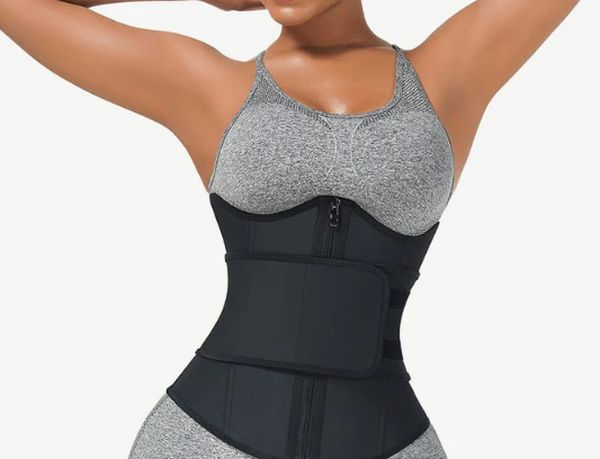How to Prevent Winter Sports Injuries

Winter sports are a lot of fun. Sledding, skating, skiing, and snowboarding are just some popular recreational choices that bring excitement, and also let you appreciate the alpine environments. But they can also be dangerous.
In fact, when it comes to the Olympics, winter sports are the most dangerous because compared to those competing in warm weather, athletes in winter sports go at faster speeds and go in the air more.
Even when you’re doing it for recreational purposes, cold weather places extra demands on your body.
Aside from possible injuries like knee injuries, dislocated shoulders, concussions, sprains, and fractures, you can also get hypothermia and frostbite from the cold weather.
Because injuries happen in winter sports, you may consider availing yourself of an insurance policy. For instance, you can get snowmobile insurance if snowmobiling is your hobby or sport.
Snowmobile insurance provides liability coverage for bodily injury and property damage. In addition, this type of insurance may also include accident benefits, which protect you from paying for your medical treatment and rehabilitation in case you sustain injuries in a snowmobile accident.
Below are some tips on how you can stay safe and prevent injuries.
Dress Adequately
Dressing appropriately is the first step in preventing any injury. When doing any kind of winter sports, it’s more than just keeping warm, you have to make sure you’re protected from frostbite, windburn, and even sunburn.
You have to choose clothes that will withstand the elements and let you move freely. It has to be flexible because if you can’t move well in your clothes, you’re more likely to get injured.
Layer your clothes to stay warm and comfortable when joining winter sports activities. It’s essential to have a base, middle, and outer layers.
For the base layer, wool is a great option because it’s moisture-wicking. The middle layer must be made of wool or fleece. This insulation layer must be loose to trap warmth. Because the outer layer serves to block rain, wind, and snow, it should be made of water-resistant fabrics to keep you dry and warm.
Avoid cotton garments because they’re not winter-friendly. They absorb water and cold, increasing your risk of hypothermia. Don’t forget to protect your extremities by wearing gloves and water-resistant shoes to prevent soaking wet feet.
Winter sports committees usually announce the type of clothing that athletes are permitted to wear during the competition.
Check the committee’s website or ask a representative for more information. Ensure you follow the rules, such as acceptable winter sports apparel for safety and to avoid disqualification.
Have the Proper Gear
Next to clothing is having the right equipment. Having the right gear can prevent injuries altogether. The basic and most important is having a comfortable and sturdy helmet.
This will help protect you from having a concussion or any heat-related injuries. Choose a helmet that has a strong shock absorption layer, and make sure that it perfectly fits you.
When going for more extreme sports, make sure that you have the gear that can keep up with your actions.
Skiing is the most dangerous winter sport, although snowboarders suffer ankle and head injuries, it’s less deadly than skiing. Make sure you have versatile equipment that can get you through the firmest snow conditions.
Look for shops that offer state-of-the-art equipment, like the Blizzard Black Pearl, which features uni-directional carbon fiber that boosts energy and responsiveness without weight.
Similarly, even when you’re snowboarding, get the board that will allow you to slide through the snow with precision.
Have a Companion
Avoid going alone. Even when you’re doing solo sports like snowboarding, there’s a potential that you can get an injury and if that happens, you want somebody there to help you.
They can also alert you to potential danger that you may have otherwise not sensed on your own. Also, being a first aid kit in case you encounter any emergency.
Warm-up Before Any Activity
Your heart and muscles have to be prepped before you go do any type of physical activity. If you don’t warm up, your muscles will contract and get tighter, especially when the temperature drops, you also risk getting cramps, and all of these can lead to a serious injury or accident.
Here are some warm-up exercises you can do:
- Arm, leg, and back stretches (5 minutes)
- Jumping jacks (x20)
- Arm circles (x20)
- Squats (x20)
- Light jog (5 minutes)
Be Wary of the Weather
Weather can change at any time. It could be a sunny day, and the next you see a blizzard coming. Plan ahead and check the weather forecast before going out.
Know Your Environment
If you’re venturing into new surroundings, make sure to do your research and learn about the area. If you don’t know the environment, then you won’t know what to avoid or where the best and safest place to go.
At least learn about the best slopes and which zones are prone to accidents. When it comes to more extreme sports, do your research before making a reservation or heading out so that you know if the snowboarding or ski destination is right for you.
Don’t Exert Yourself
Don’t push yourself too hard and don’t attempt any new tricks without a professional assisting you.
Also, when skiing or snowboarding, avoid attempting slopes that you’re not familiar with. Know your limits and avoid pushing yourself beyond your expertise. You can get injured or you may encounter an accident.
Also, know when you need to take a break. Allow yourself to refuel and hydrate. Winter activities are fun but know when to rest and let yourself recover.
Don’t Let Injuries Ice Your Fun
Injuries are unpredictable but they can be prevented. The following tips don’t guarantee that you won’t get hurt, but they will lower the risks.
If you find yourself or someone else in an accident, seek help immediately, and find the best treatment.






